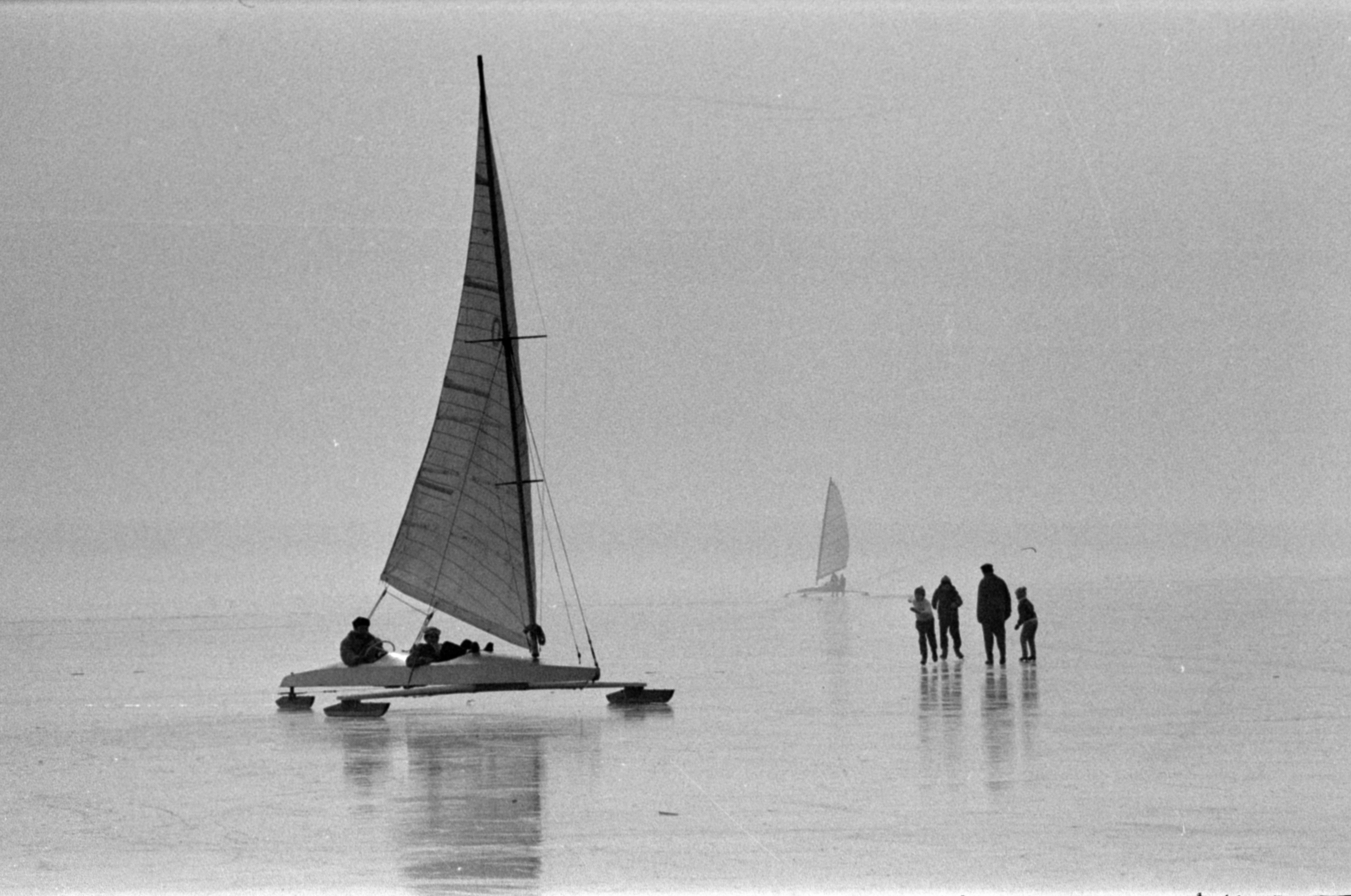The first ice sailboats probably sailed in the Netherlands in the 17th
century. Merchants converted canal boats with skates so they could use them on
the frozen waterways.
In the so-called Little Ice Age, between the 16th and
19th centuries, Dutch canals were covered with ice for up to five months a
year, during which time goods still had to be delivered.
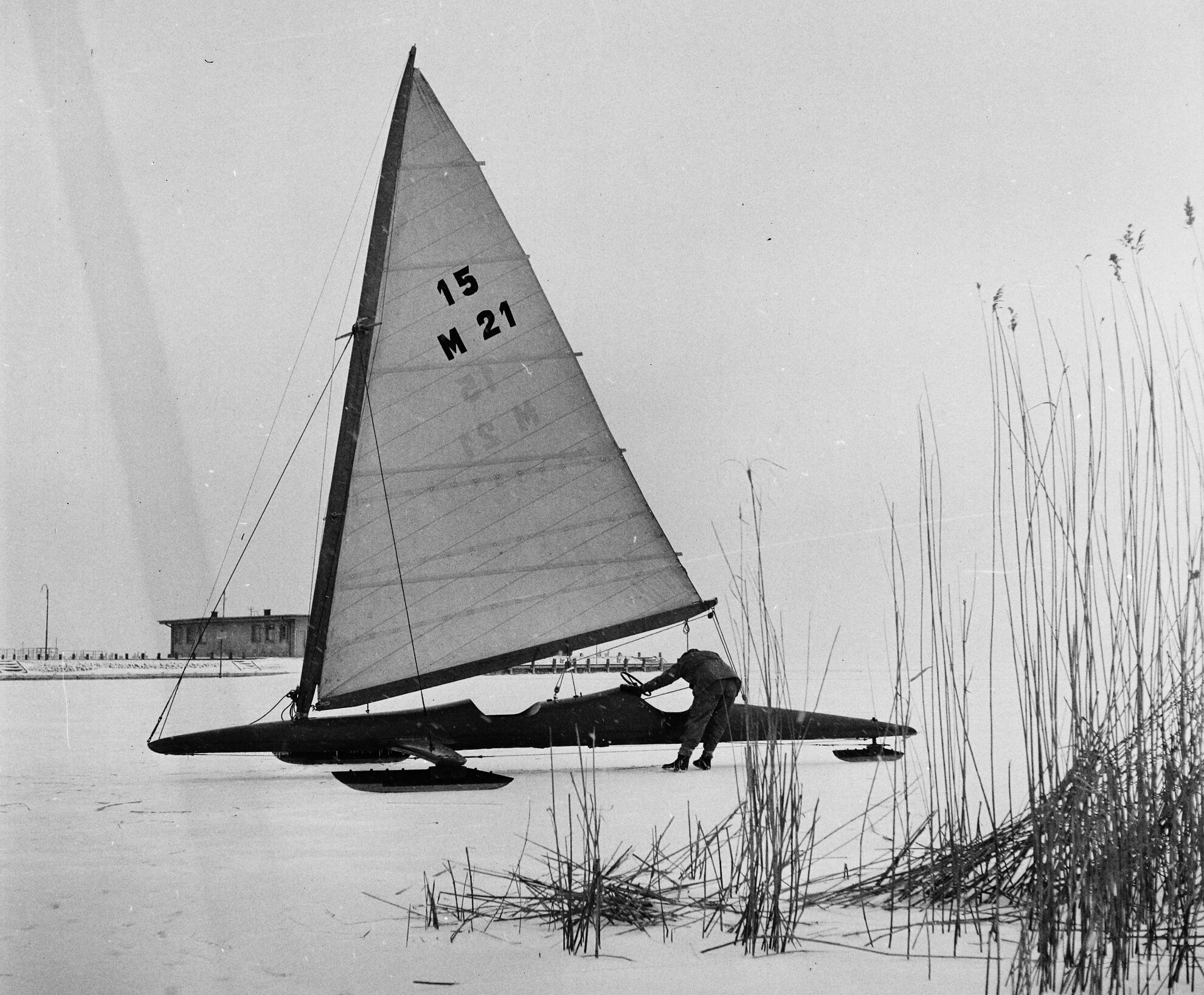
The first modern ice sails appeared on the Great Lakes in America in the early 19th century. The hulls were initially square, the vessels later triangular. From 1879, a ridge was added under the hull, skates at the front and back, and a rudder at the very end. Ice sailboats were used not only for sport but also for freight and ice fishing.
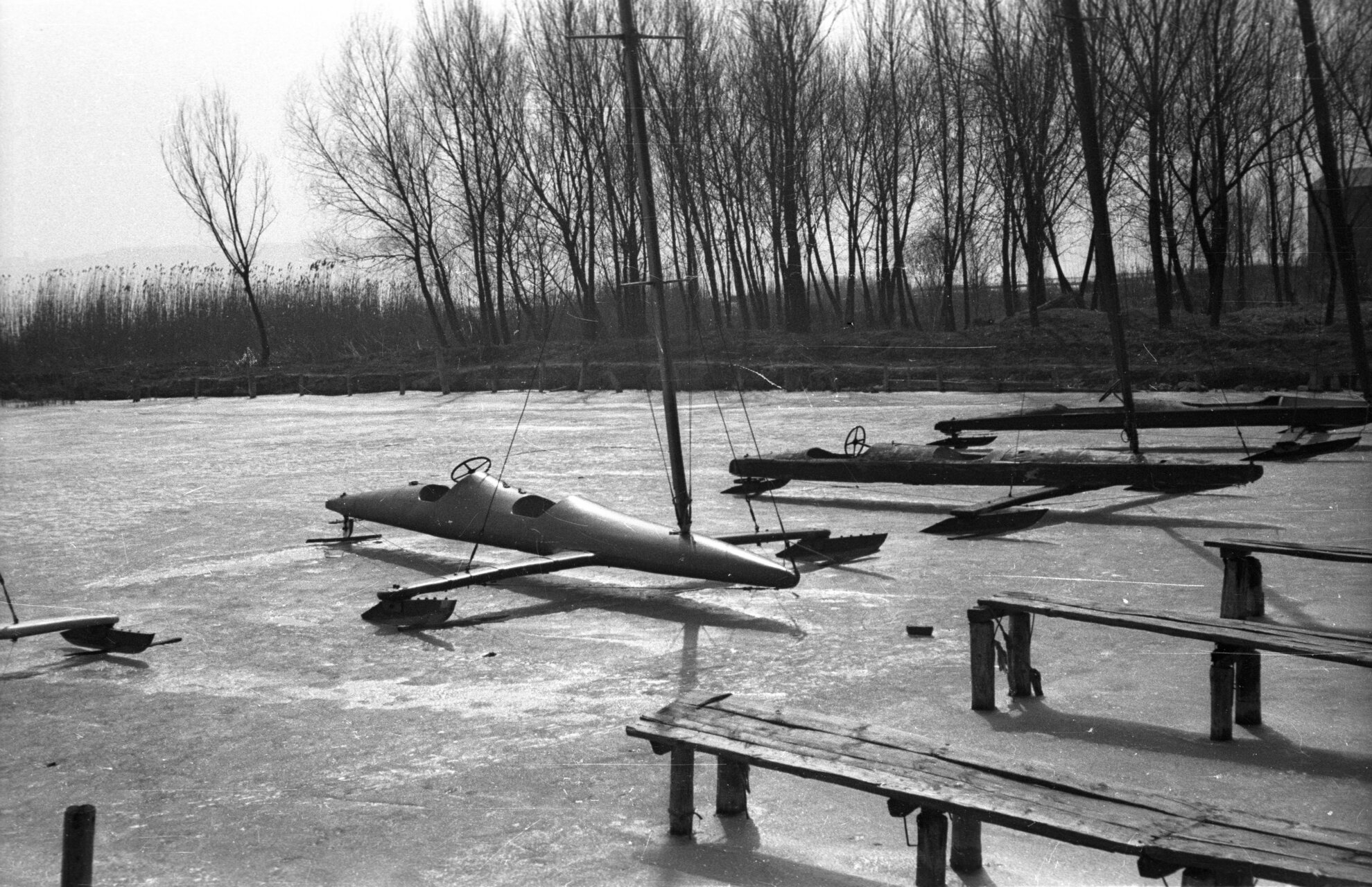
Ice sailing was made fashionable in Hungary by John Harris, the later foreman of the Balatonfüred Shipyard, in the late 1880s. Nándor Gyapai, the director of the Stefánia Yacht Association, persuaded him to make an ice sailboat, and from then on, it became the winter sport on Lake Balaton.
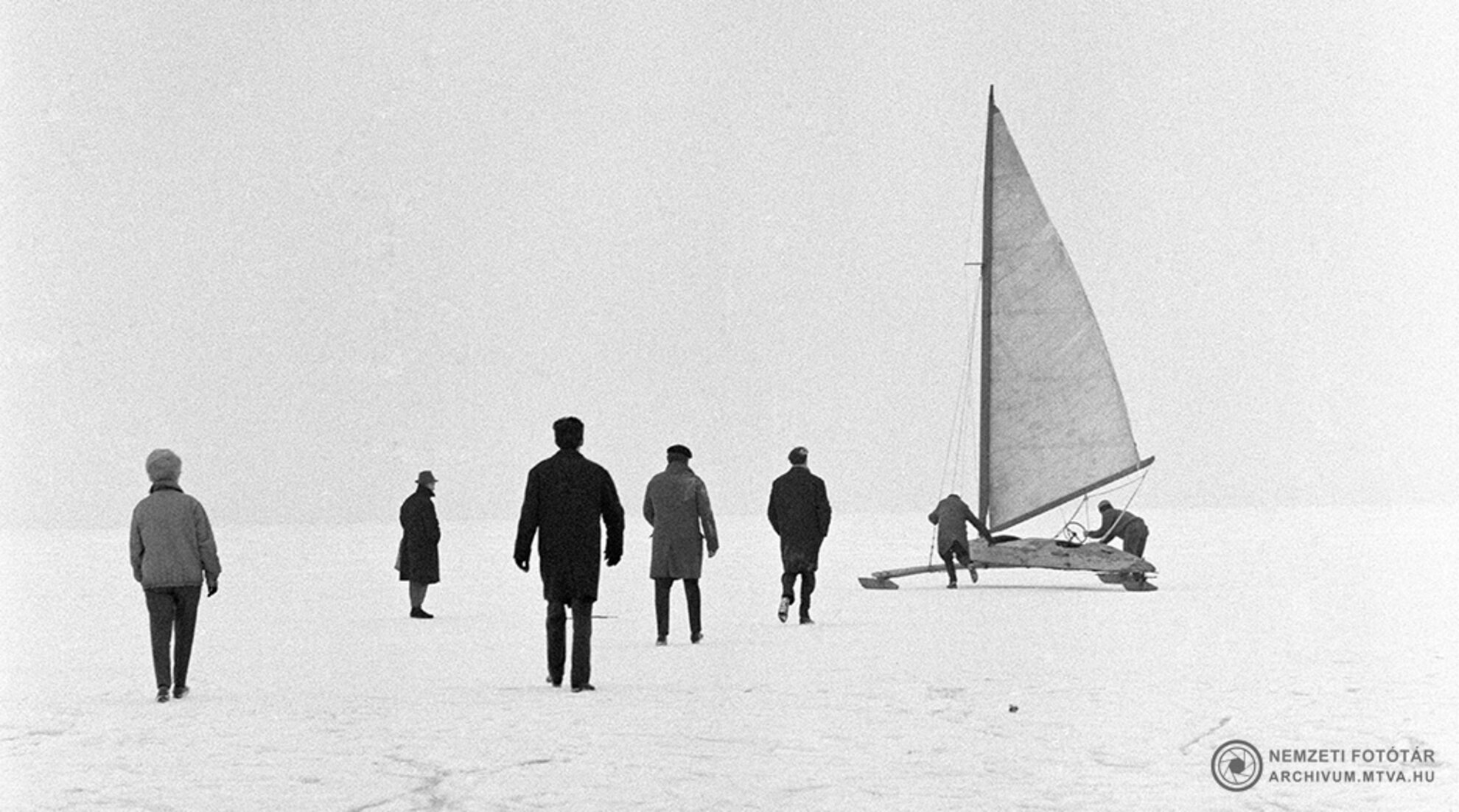
The fact that Count Géza Andrássy covered the 14km distance between Balatonfüred and Siófok in 11 minutes reveals a lot about the speed of the sailboats. The last certified Hungarian speed record was set by Tibor Heinrich at 150 km/h – in 1935.
The first domestic race took place on 1 February 1937, on a triangular track five kilometres long.
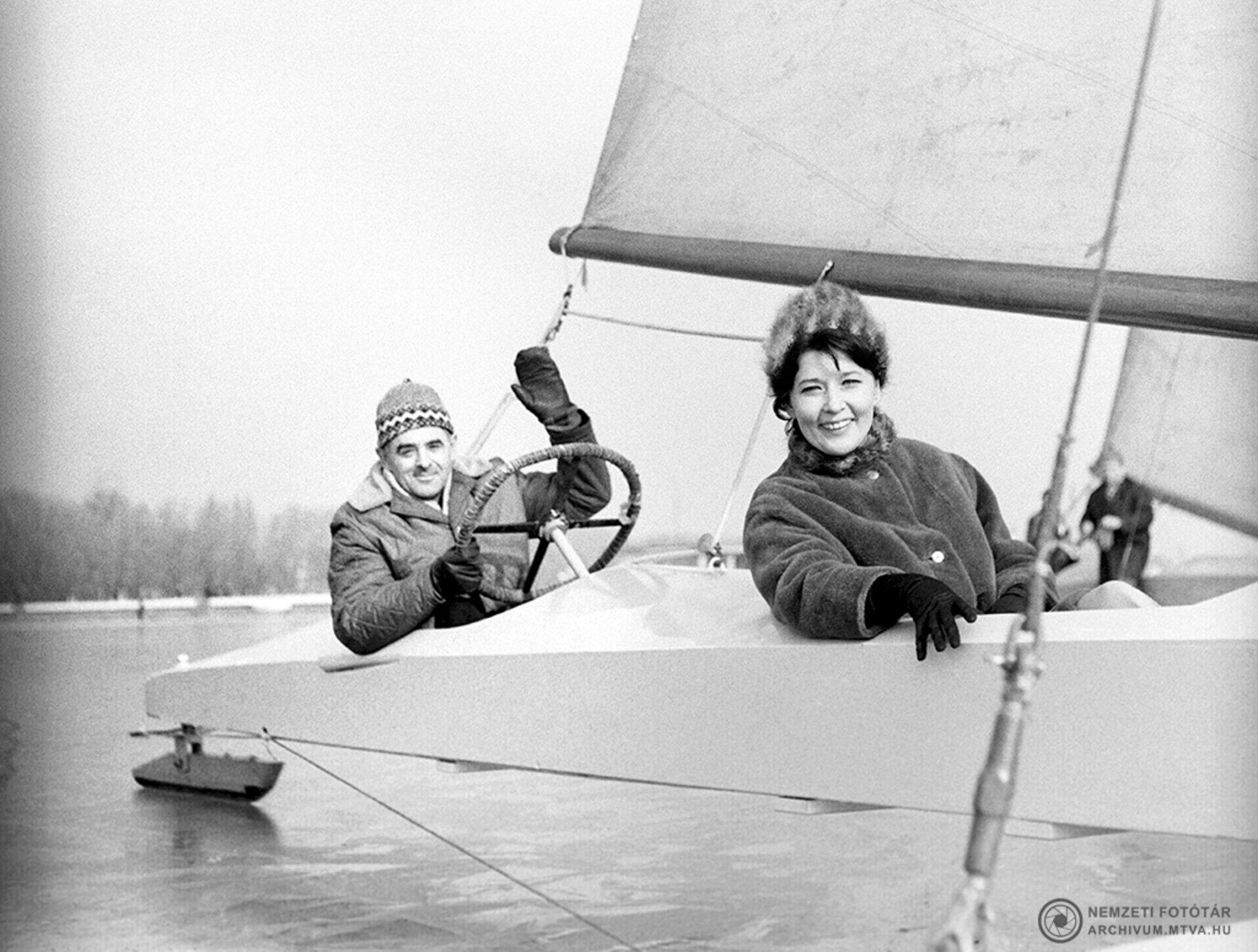
In 1964, the Hungarian Sailing Association provided financial support for the development of ice sailing, allowing four new 12-square-metre ice vessels to be built at the Balatonfüred Shipyard.
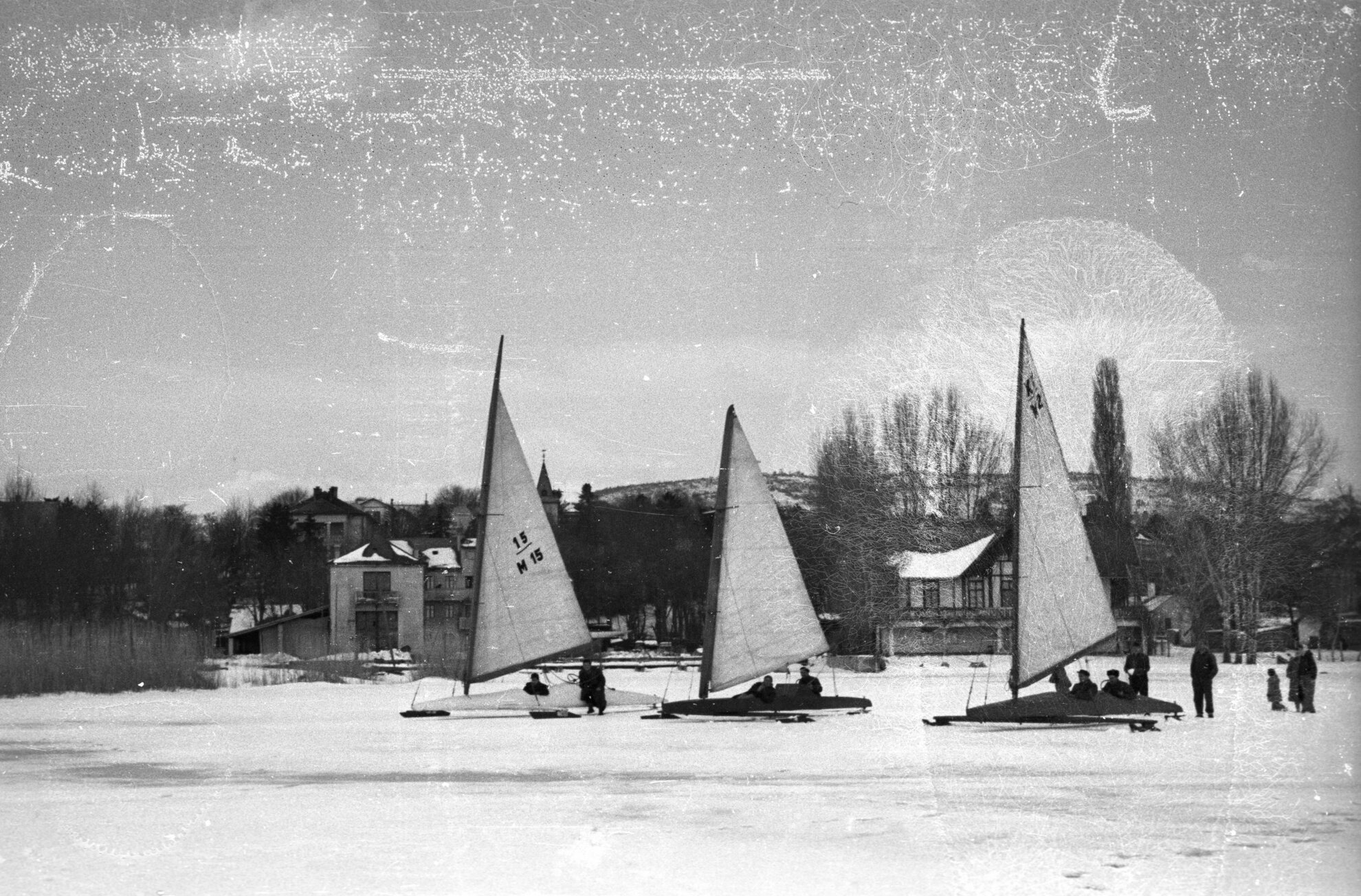
In the picture above, ice sailboats glide in front of the Balatonfüred Yacht Club and the Vitorlás Restaurant in 1966.
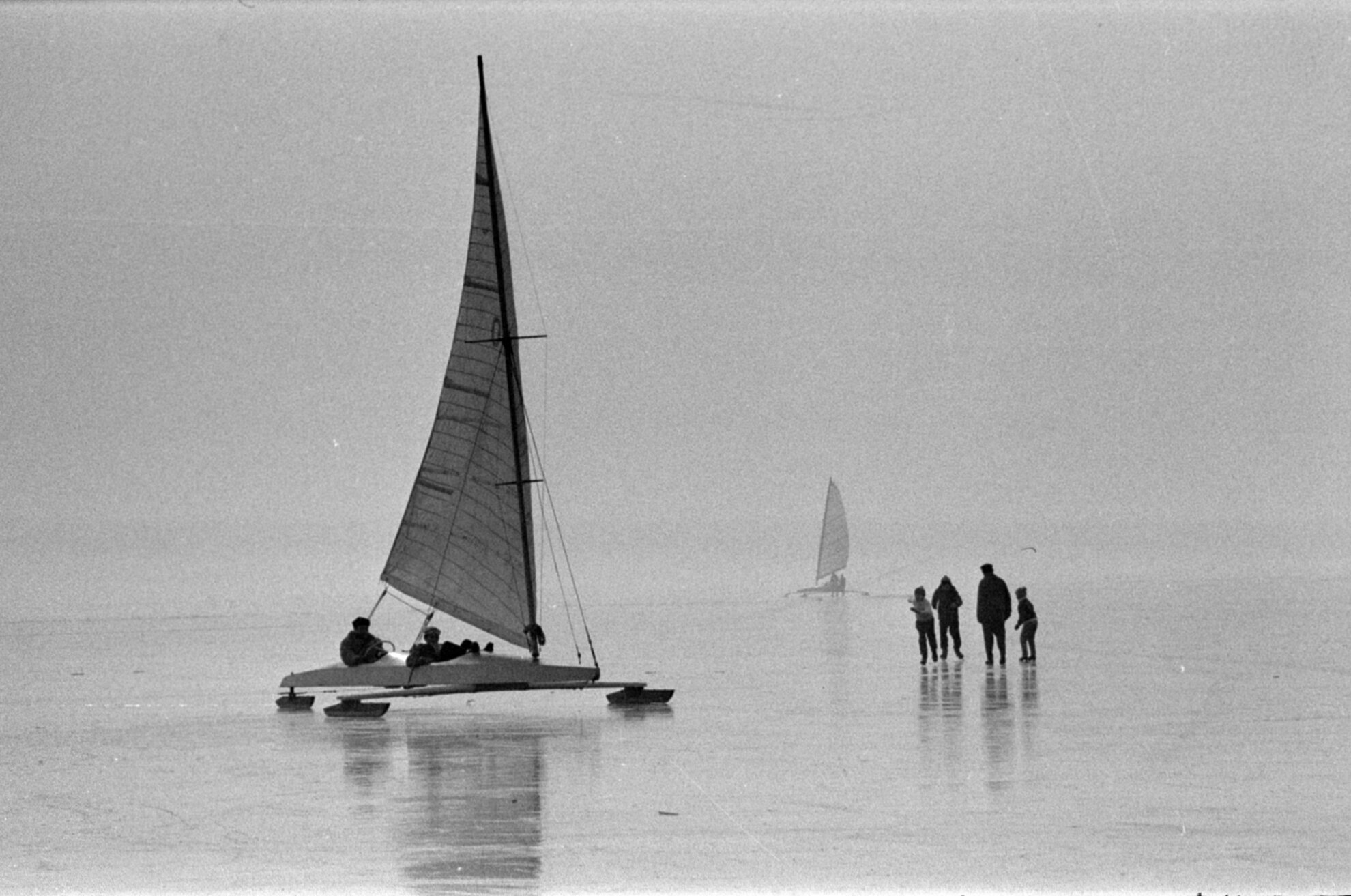
The popular Skeeter class was created in the 1930s and the DN class in
1937. The name refers to the Detroit News, which had previously announced a
competition for someone to build a single-person contraption for winter sports that
could be made at home and transported by car.
The first representative of the
type in Hungary was completed by Dr Pál Sándor at the Balatonfüred Shipyard in
1970. It was such a success that DN ice sailboats were being manufactured for
export by the early 1970s.
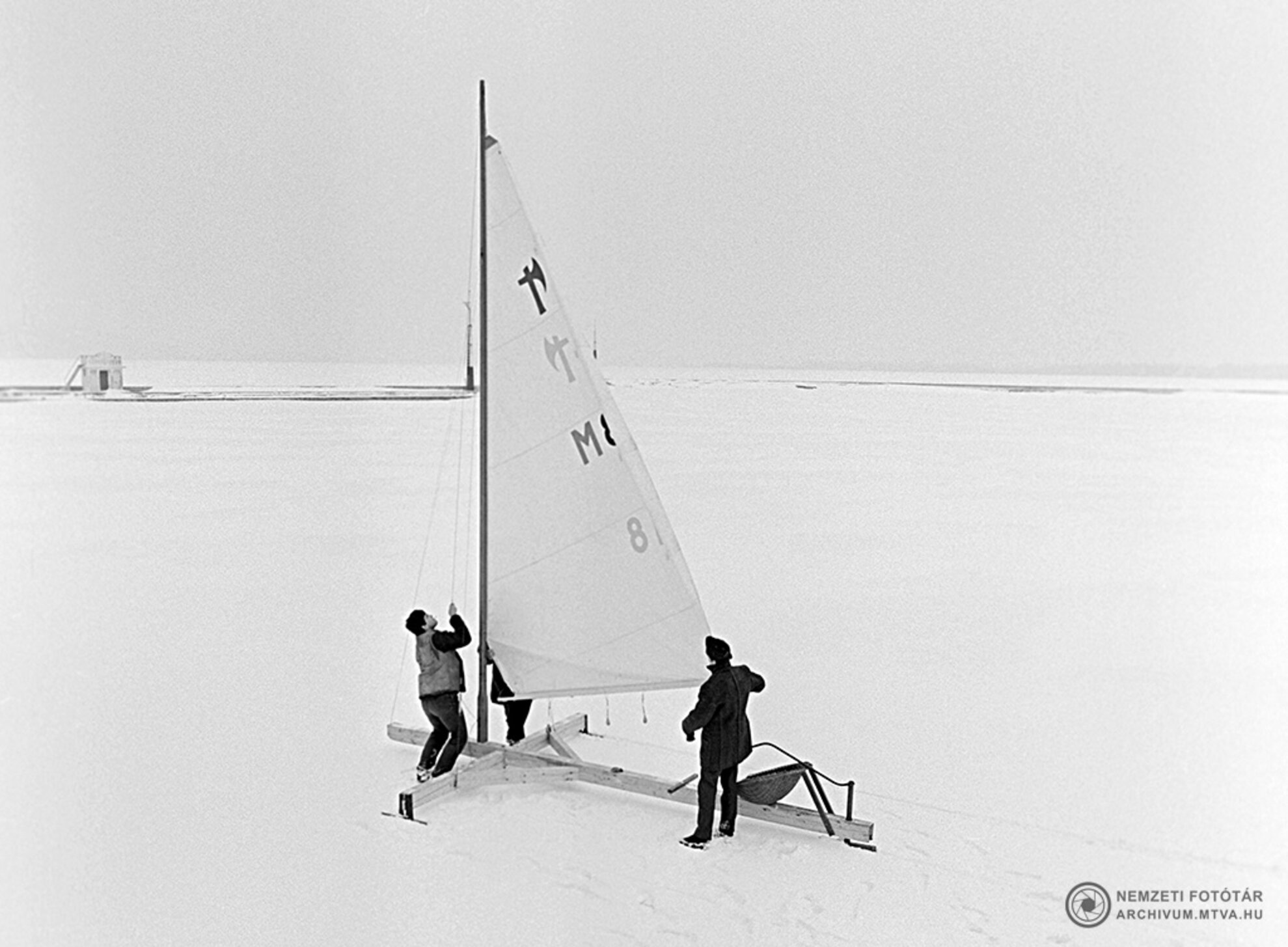
In December 1976, ice-sailing fleets at Lake Balaton were established at Balatonfüred, although competitions took a while to get started. The renaissance of ice sailing was brought about by the Ice Sailing DN Class Association, formed in January 1999.
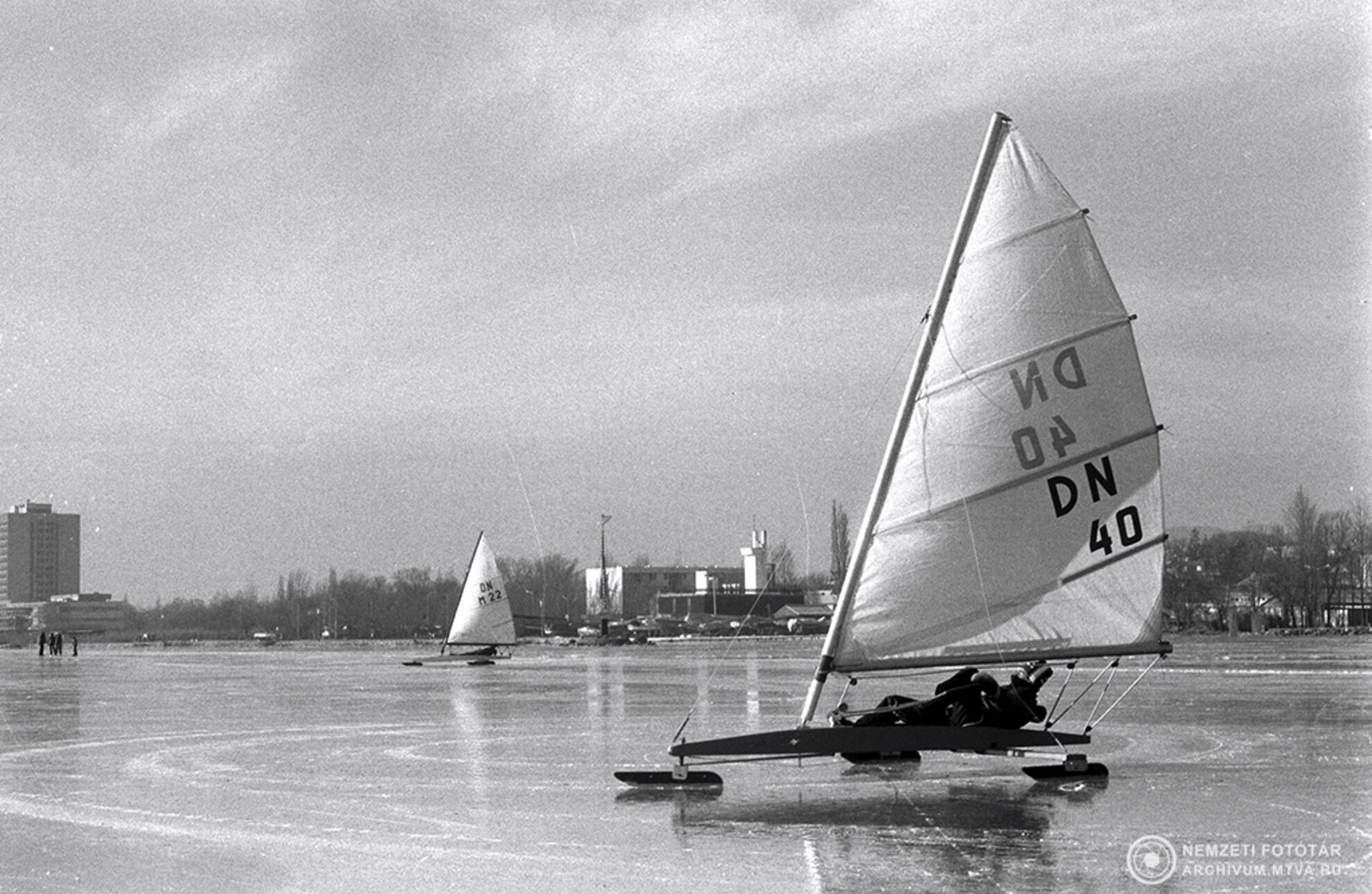
The right stuff
“You can go out onto the ice when it’s 8-10cm thick, but it must be twice
that for serious competition. The ideal ice is as thick, transparent and smooth
as possible. This is called black ice. But this must also be paired with the
right wind strength. If the surface of the ice is rougher or covered with snow,
a stronger wind is needed. If it’s completely smooth, then races can start in lighter
winds,” – István Attila István, president of the Hungarian DN Ice Sailing Class
Association.
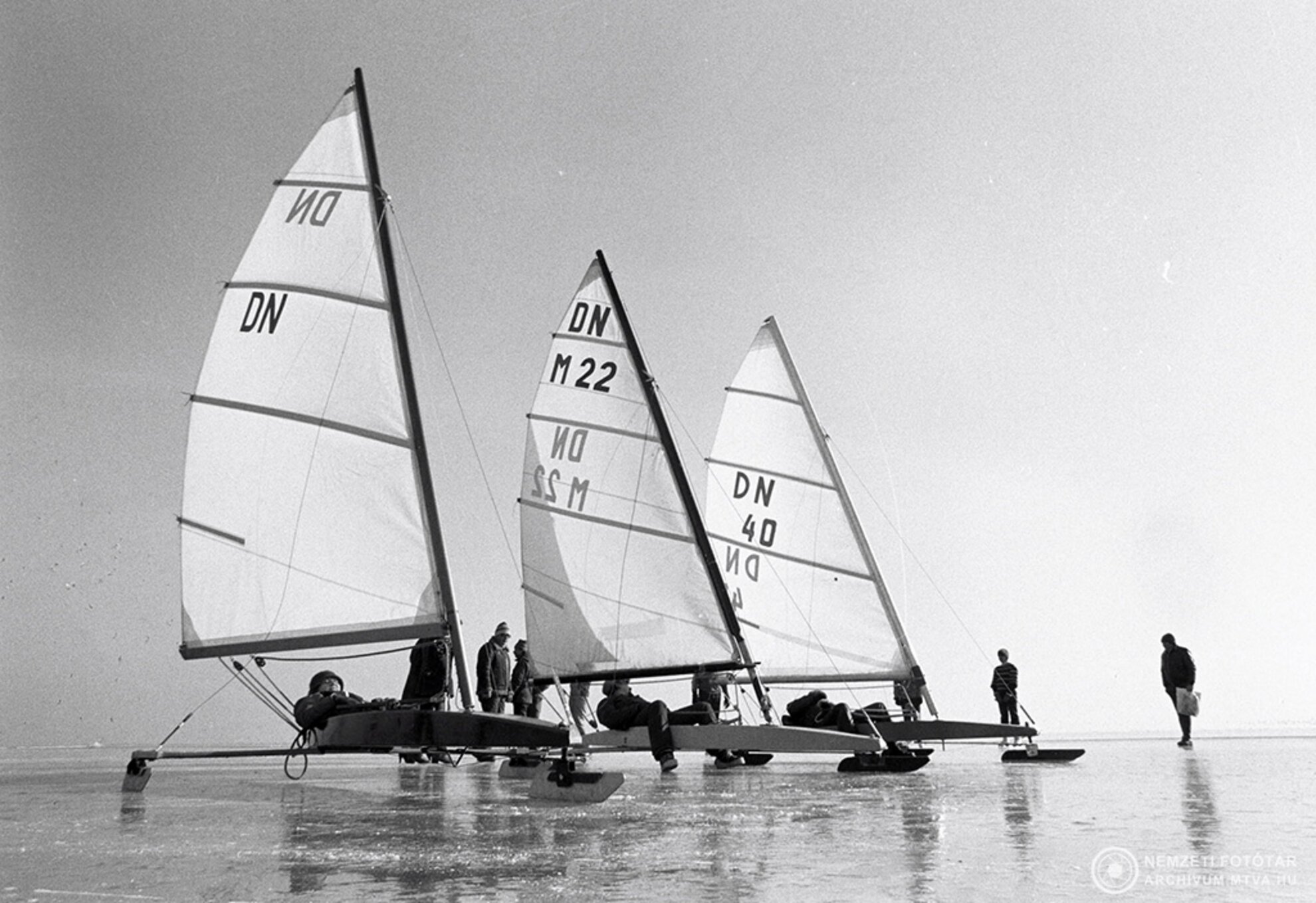
2017 was the last big winter for ice sailing on Balaton – and for
other winter sports, as about 8,000 people crossed the lake on foot, on skates, by
sledge and by bicycle. At one point towards the end of February 2017, Lake Balaton was the most
suitable ice surface for ice sailing in Europe, and the IDNIYRA European
Championships were held at Balatonfüred.
There is no prospect of similar weather
conditions yet, but if they do occur, ice sailboats will appear in numbers.
